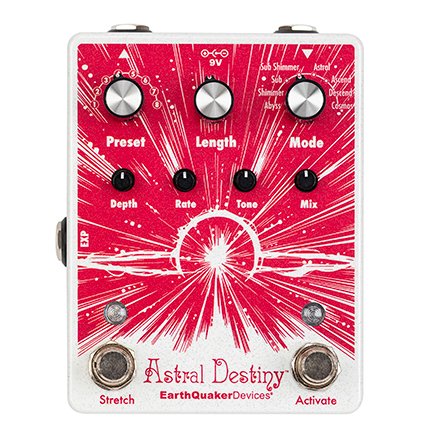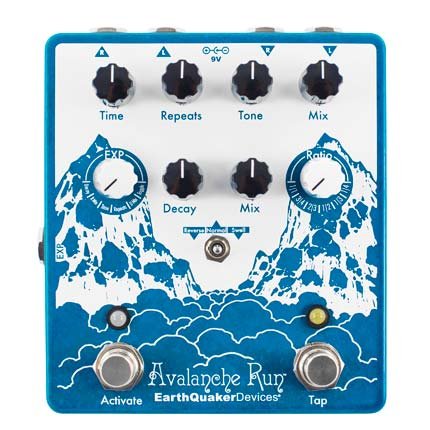A Touch of Grass : Eco Art & Sound Installation with EarthQuaker Devices
Austin Arrington
In this guest blog post, PLANT Group co-founder / executive director Austin Arrington talks about their upcoming exhibition at Brooklyn gallery The Locker Room, and interviews the composers Jesse Serrano, Wicked Rio, and Jo3yott on working with EarthQuaker Devices to help compose a nature-based soundscape for the show.
The Pristine Myth is the myth told by the dominant colonialist and capitalist system that in 1492 the North American landscape was a virgin forest, "a world of barely perceptible human disturbance” (Denevan, 1992). The wilderness image has become part of American heritage, associated with “a pioneer past in need of preservation” (Bowden, 1992; Denevan, 1992; Pyne, 2017). The reality of this colonialist perception could not be farther from the truth. What seemed an untouched Eden to the Europeans, was in fact the result of millenia of ecological engineering and indigenous knowledge systems – which were able to cultivate the landscape in order to provide food, materials, shelter, and other ecosystem services, while maintaining the delicate balance needed to support the diverse biota of its nonhuman residents. This epistemological and existential separation of humans from nature pervades American thought to this day (and is exhibited strongly through our national parks, conservation groups, and imposed separation from the natural world through the intentional design of our built environments). The European mentality which ravaged the natural resources of this land, and exacted a genocide on the First Nations people, is now embedded in our cities, technology, and informational systems.
A Touch of Grass invites us to reimagine the city as a home for human and non-human residents alike. PLANT Group co-founder and artist Nicholas Drewchin fashions furniture out of the reclaimed yellow pine bones of old Brooklyn spaces. Inspired by Japanese Ikebana and the techniques of George Nakashima, the pieces themselves teem with vegetation and new life – helping to clean the air of the pollutants we’ve laced our habitat with, while honing the mind towards an appreciation of the interrelationship of life and death shown to us by the dancing of plants across the seasons. Chongha Peter Lee brings bamboo, harvested from a Brooklyn backyard, to the forefront of the show. The racist connotations of calling this plant “highly aggressive and invasive” should not be overlooked. Instead of spraying our urban landscapes with glyphosate – perhaps we can realize the blessing before us, and utilize this technology for creating scalable shelters for urban residents. The ideological framework for foraging invasive plants to generate socioeconomic and cultural value for urban communities was developed previously by PLANT Group co-founder and executive director Austin Arrington in “Urban foraging of five non-native plants in NYC: Balancing ecosystem services and invasive species management” published in Urban Forestry & Urban Greening (Arrington, 2021).
The soundscape composed by Bronx natives Jesse Serrano, Rio Anderson, and Jo3yott combine the sounds of nature and humans, immersing the visitor and reminding us that amidst these steel and concrete canyons, we are indeed a part and parcel of nature. Video art by CUTSDATFLO, Jon Perez, and Postworkverse imbue an informational layer over the scene – inviting the visitor to photosynthesize; to take in the light and reimagine a world simultaneously new and ancient. The sculptures of Sam Tufnell, Garret Kane, and Cecile Chong present the aesthetic languages needed to communicate the horrors and hopes of our separation with nature, and the constant calling we have to return home.
L to R: Jesse Serrano, Joy3ett, Rio Anderson
Interview with the Composers
Austin: So tell us about this piece that you’re composing for the exhibition.
Jesse: It combines the sounds of both nature and the city. It captures the feeling of living in the city. Waiting for the train, all the people around you. And it also captures the serenity when you come in contact with nature. The sound of the birds, the wind, fresh air. We’re trying to capture those feelings and emotions all at once.
Rio: To me the piece is about growth, landscapes, and artistic values all in one giant melting pot (focused around the city). We’re capturing soundscapes. Anything that you hear outside in New York. Somebody getting into the cab, the birds, the squirrels running through gutters. We’re trying to make an immersive experience. So once you walk into the room you hear and feel like you’re walking through Central Park or McCarren Park.
Jo3yott: We call it the sonic art of the century. It’s the music of New York City. You hear wind, birds, insects, humans interacting. You’ll also hear machines. You have to come to the show to experience it!
Austin: Tell us some more about your background and inspirations.
Jesse: I grew up in New York. I want everyone to experience what it’s like living in New York City. What it’s like to wake up and hear the trains passing by. I always wanted to do an ambient project. I want to do a classical project at some point, and this is a first step for me.
Rio: I grew up in Jamaica. I’ve always said, “I don’t know how kids grow up in New York.” But now I really respect the kids I know that grew up in New York. They’re very tolerant of loud noises. I’ve also grown more tolerant (I came to New York as a teenager). New York is a great place to experience things. But growing up in Jamaica I was just always in nature. I like waking up and hearing the birds. In my subconscious I think I’m hearing roosters.
Jo3yott: I moved to New York and it’s had a big influence on me – my taste in music, the food that I eat, the people that I meet, how I move around. The city made me strong, resilient. The city’s a part of me. New York is me and I’m New York. Growing up my Dad used to farm. So I grew up seeing people farm. I’ve always been one with nature. I was always in the woods. I grew up, you know, with no shoes, playing in the dirt. My Dad always allowed me to play in nature. I’ve always been one with nature.
Austin: How about musical inspirations?
Jesse: When I was writing violin parts I was really inspired by Angelo Badalamenti. He’s a classical composer. He’s insane. He uses synthesizers. He’s the guy who composed the Twin Peaks piece. I’m also very inspired by the cellist who played on the piece, Eric Ordaz. He came in with an electric cello from the 80s (he looks like an 80s hair metal god). And he came in with an 80s hair metal cello and we plugged into the Astral Destiny and the Avalanche Run pedals from EarthQuaker Devices. He was playing and I was adjusting the knobs, making these swirly sounds that sounded like waves and wind at some points.
Jo3yott: Hans Zimmer is one of my favorites. David Foster, a composer from Canada. I listen to a lot of Quincy Jones too. Martin Garrix also. And Max Martin – he’s the GOAT.
Austin: What’s your experience been like working with EarthQuaker Devices?
Jesse: It’s been great. I’ve never had bigger sounds. These pedals go from like a nice regular reverb sound to the loudest tones in the world. We got some of the beautiful soundscapes. I didn’t think it was possible (that you could get these sounds from a cello, a guitar. etc.). They can fill up so much space. It’s the perfect amount of gear.
About Us
PLANT Group (People Learning About Nature Together) is an ecological design and engineering firm connecting humans and nature to enable climate adaptation and mitigation work. The Locker Room is a femme-owned creative house that comprises an art collective, recording studio, gallery and production house based in Brooklyn, New York.
Works Cited
Arrington, Austin. "Urban foraging of five non-native plants in NYC: Balancing ecosystem services and invasive species management." Urban Forestry & Urban Greening 58 (2021): 126896.
Bowden, M.J., 1992. The invention of American tradition. Journal of historical geography, 18(1), pp.3-26.
Denevan, W.M., 1992. The Pristine Myth: The Landscape of the Americas in 1492.
Pyne, S.J., 2017. Fire in America: a cultural history of wildland and rural fire. University of Washington Press.








